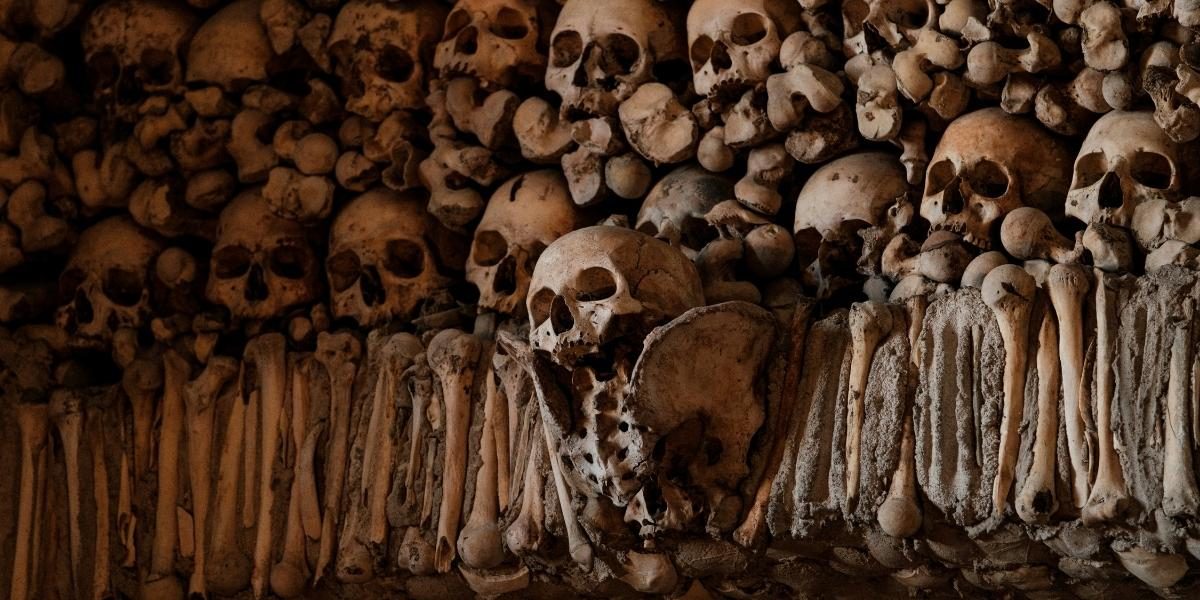Exploring the History and Significance of Catacombs
Beneath the bustling streets of major cities around the world lies a mysterious and often overlooked part of history—catacombs. These underground burial sites, once used to house the dead, are now significant historical, cultural, and archaeological treasures. From the ancient catacombs of Rome to the lesser-known burial tunnels of Paris, these subterranean worlds offer a glimpse into past practices of death, burial, and remembrance. In this article, we’ll explore the history, architecture, and cultural significance of catacombs, and uncover the intriguing reasons they continue to captivate people today.
Read Also: The Rich History of the Navajo People: From Early Beginnings to Modern Challenges
What Are Catacombs?
Catacombs are underground burial sites, typically constructed beneath cities, where the deceased were laid to rest in tombs or niches carved into the rock or walls. Unlike traditional cemeteries, which are often found above ground, catacombs are designed to be hidden beneath the earth’s surface, offering both a practical solution for overcrowded burial grounds and a way to protect the dead from external threats.
The term “catacomb” is derived from the Latin word “catacumba,” meaning “a hollow” or “a subterranean chamber.” While the use of underground burial sites dates back thousands of years, the term is most commonly associated with early Christian burial sites in the Roman Empire.
The practice of burying the dead in catacombs can be traced to ancient times, and catacombs were often built in areas where rock formations allowed for easy excavation. Many catacombs were used for religious rituals, particularly for early Christians who sought refuge from persecution. Over time, these sites became important cultural and religious landmarks, many of which remain significant today.
The History of Catacombs: From Ancient Rome to the Modern Day
The origins of catacombs can be traced back to ancient Rome, where the growing population and limited space for burial led to the creation of underground burial sites. Early Christians in Rome, in particular, sought refuge in these catacombs to bury their dead and hold secret religious ceremonies. The Catacombs of San Callisto and Catacombs of San Sebastiano in Rome are some of the most famous and are thought to have been used between the 2nd and 5th centuries AD.
Christian catacombs were often built along the outskirts of the city, outside the Roman walls, and were considered sacred spaces. They were a place for mourning, honoring the dead, and holding early Christian liturgies. As Christianity spread, more catacombs were constructed to accommodate the growing number of Christian burials.
While the catacombs of Rome are the most famous, similar burial sites can be found across the world. Paris, for example, is home to the Catacombs of Paris, a vast network of tunnels that originally served as quarries and later became a final resting place for millions of Parisians.
In addition to religious use, catacombs were often used by other civilizations for different purposes. The Catacombs of Kom el Shoqafa in Alexandria, Egypt, represent a fascinating blend of Egyptian, Greek, and Roman architectural styles and were used as a burial site during the 2nd and 3rd centuries AD.
The Architecture and Structure of Catacombs
The construction of catacombs required careful planning and execution. Most catacombs were built by digging into soft rock, such as tufa or limestone, which could be easily excavated but was sturdy enough to support the weight of the earth above. The walls of these catacombs were often lined with niches or loculi, where the deceased were placed. Some catacombs even contained more elaborate burial chambers, crypts, or mausoleums for prominent individuals.
The architecture of catacombs is designed to create a sense of order and reverence. The spaces were often organized into complex networks of tunnels, chambers, and corridors, with the primary goal of housing as many bodies as possible. In some cases, the tunnels were meticulously planned and carved to allow for easy navigation, as seen in the Catacombs of Rome, which stretch over 60 miles (100 km) beneath the city.
In addition to their function as burial sites, many catacombs feature early Christian art, such as frescoes, inscriptions, and symbols like the fish and the Chi-Rho, which were used by early Christians to signify their faith. These artistic elements serve as a historical record of religious beliefs and practices in the early Christian period.
The Role of Catacombs in Religious and Cultural History
Catacombs are not only of historical and architectural significance but also hold great religious and cultural importance. For early Christians, the catacombs represented a place of sanctuary and resilience in times of persecution. They were spaces where Christians could bury their dead with dignity, practice their faith in secrecy, and create a collective memory of the martyrs who had died for their beliefs.
The early Christian use of catacombs is a symbol of the community’s strength in the face of adversity. Over time, catacombs became places of pilgrimage, as believers traveled to honor the graves of saints and martyrs. The catacombs of Rome, for example, became key sites for Christian pilgrims during the Middle Ages.
Catacombs also represent a broader cultural history of death and burial practices. In many ancient cultures, burial practices were a reflection of societal values, beliefs, and attitudes toward the afterlife. The construction of catacombs allowed for a more organized, respectful, and ritualistic approach to burial, which contrasted with the open-air burial practices common in earlier times.
Catacombs Today: Preservation and Tourism
Many catacombs around the world are now protected as UNESCO World Heritage Sites or are managed by governmental and religious organizations to ensure their preservation. The Catacombs of Rome are among the most visited and studied, attracting millions of visitors who come to marvel at their history and architecture.
In Paris, the Catacombs of Paris are an iconic tourist attraction. Originally created to solve the city’s overcrowded cemeteries, the catacombs now house the remains of over six million people. Visitors to the catacombs can explore the tunnels and see the eerie arrangements of bones and skulls that have made this site so famous. However, the catacombs also serve as a reminder of the city’s history and the changing attitudes toward death and burial over the centuries.
Preserving catacombs presents significant challenges, especially when it comes to managing the risks posed by erosion, structural instability, and human activity. Efforts are underway around the world to protect these ancient burial sites and ensure that they are accessible for future generations of historians, archaeologists, and tourists.
Read Also: The Mysteries of Stonehenge: Construction, Purpose, and Legacy
The Enduring Mystery of Catacombs
Catacombs continue to intrigue and inspire, offering a glimpse into past civilizations’ complex relationships with death, religion, and culture. These subterranean worlds are more than just burial sites; they are lasting monuments to human ingenuity, spirituality, and the reverence for the deceased. As we explore these ancient tunnels, we uncover not only the stories of those who were laid to rest there but also the cultural and religious practices that shaped the societies that created them.
Whether in Rome, Paris, or beyond, catacombs provide an important historical and archaeological record, preserving the memories of those who lived before us and serving as a connection between the past and the present. The legacy of catacombs reminds us that beneath the surface of our cities, there are hidden worlds that speak volumes about the way humans have interacted with death and the eternal.








